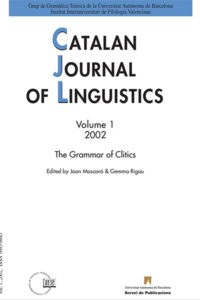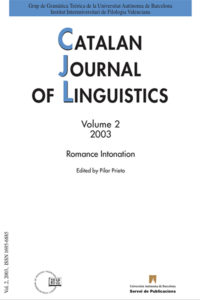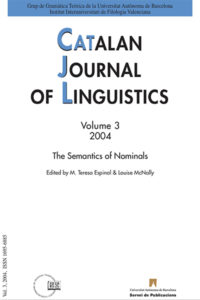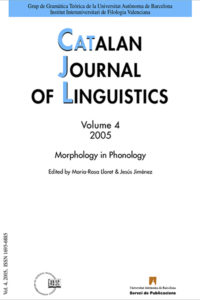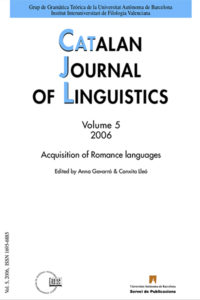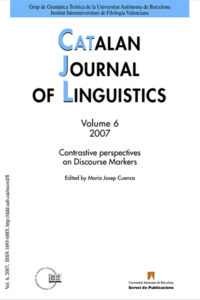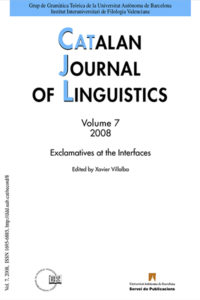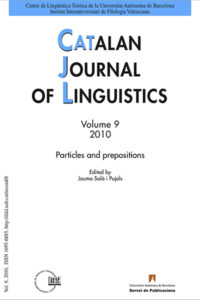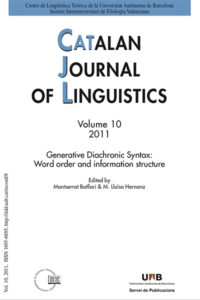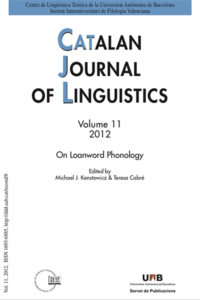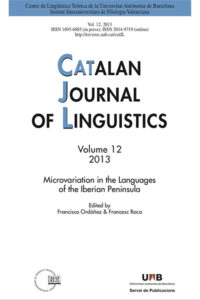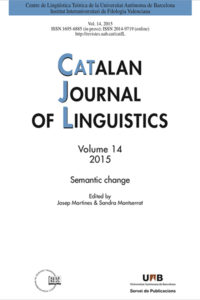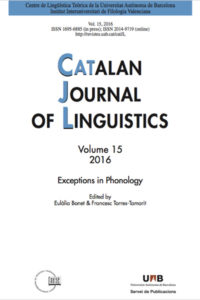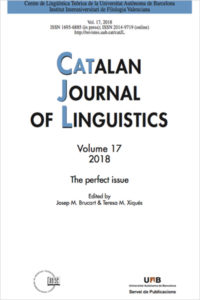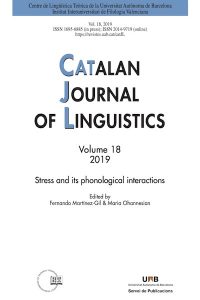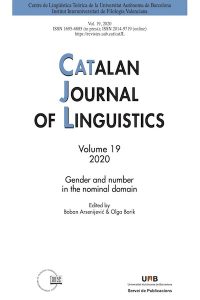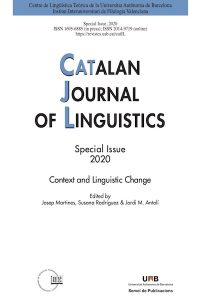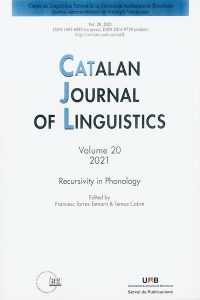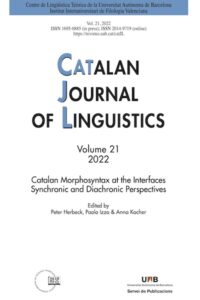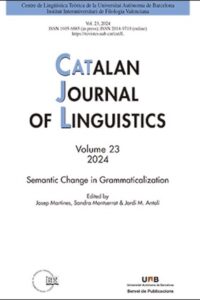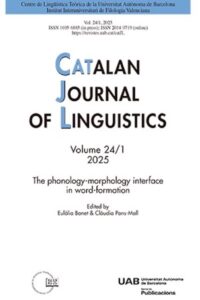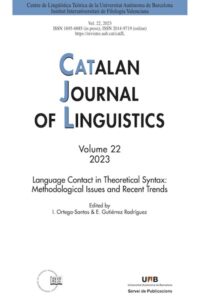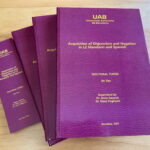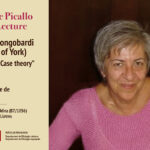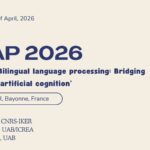30 juny, 2023
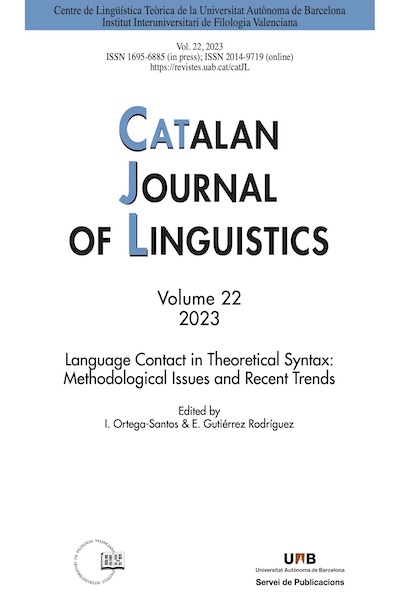
Autors:
I. Ortega-Santos & E. Gutiérrez Rodríguez (eds.)
Títol:
Language Contact in Theoretical Syntax: Methodological Issues and Recent TrendsEditorial: Universitat Autònoma de Barcelona, Servei de Publicacions
Col·lecció: Catalan Journal of Linguistics #2023Data de publicació: 2023
Pàgines: 148 Més informació
Text completWhile most syntactic research has naturally focused on varieties spoken by (supposedly) monolingual speakers, the study of language contact stands out as particularly relevant not only as celebration of linguistic diversity, but also from the theoretical point of view. For one thing, it expands the number of syntactic context available to test hypotheses by adding contact varieties and heritage languages as well as phenomena such as code-switching into the picture. Moreover, the study of language contact presents data collection challenges, which speak directly to ongoing debates on data collection standards in the field of syntax. In particular, there is an ongoing trend towards the adoption of experimental data collection methods and statistical analysis and/or the use of crowdsourcing and citizen science (e.g., see Gallego and Ortega-Santos 2019). Language-contact phenomena correspond to highly specific geolects/sociolects that are not necessarily spoken by the researchers. Thus, researchers are faced with the question of how to gather the data most efficiently and with generalizability; crucially, these issues are discussed explicitly in the corresponding publications, in contrast to most non-experimentalist or non-variationist syntactic research, thus helping the field of theoretical syntax as a whole adopt experimental data collection protocols. Furthermore, the study of language contact has figured prominently in the study of language change, with an emphasis on the extent to which language contact may cause syntactic changes – changes in the I-grammar, say, parameter resetting – and, if so, under what conditions (see Meisel et al. 2013 and references therein). Last but not least, this is also an area relevant to the study of external factors (e.g., language identity or language shift). As such, it lends itself to interdisciplinary work and hopefully crosspollination inthe study of the relationship between the grammar/competence and more usage-based notions such as frequency.
Títols de la col·lecció / Also in this series:
28 gener, 2021
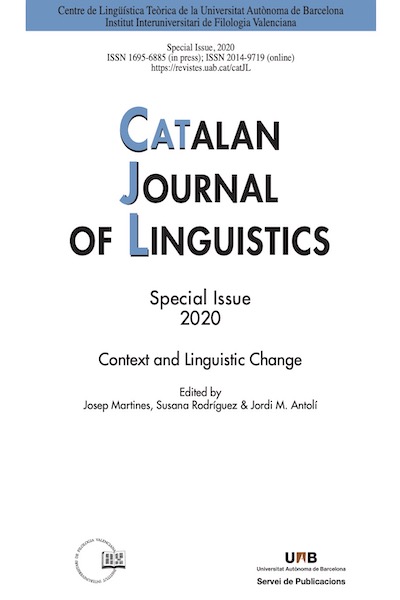
Autors:
Martines, Josep, Susana Rodríguez & Jordi M. Antolí (eds.)
Títol:
Context and Linguistic ChangeEditorial: Bellaterra: Servei de Publicacions de la UAB
Col·lecció: Catalan Journal of Linguistics #2020 SpecialData de publicació: 2020
Pàgines: 204 Text complet
The papers integrating this special issue aim at shedding light on the many research possibilities suggested by usage-based linguistics. All the contributions have different goals, focus on different languages (Catalan, English, Spanish or Portuguese), use several chronological frameworks (there are diachronic and synchronic analysis) and approach a variety of linguistic elements. However, despite this seeming heterogeneity, all the papers share a similar methodology and a conception of linguistic communication – and, specifically, of linguistic change – strongly based on usage.
Títols de la col·lecció / Also in this series:
27 gener, 2021
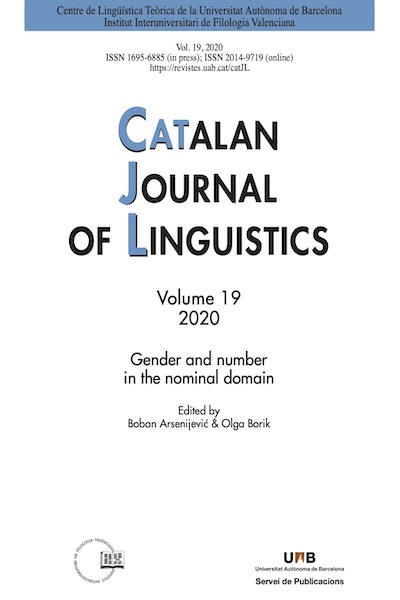
Autors:
Arsenijević, Boban & Olga Borik
Títol:
Gender and number in the nominal domainEditorial: Bellaterra: Servei de Publicacions de la UAB
Col·lecció: Catalan Journal of Linguistics #2020Data de publicació: 2020
Pàgines: 260 Text completGrammatical gender and number have been studied from a variety of theoretical viewpoints and still there is no commonly established and well-defined view on the nature of the two categories. The term ‘gender’ is used for a range of grammatical phenomena, including noun-classification into corresponding inflection classes and syntactically conditioned rules of agreement and concord. Like grammatical gender, grammatical number can be realized through inflection on the noun and/or through the agreement that it triggers on other items. However, unlike grammatical gender, grammatical number has stable, straightforward and systematic interpretive effects, related to the quantity of the predicate denoted by the noun, and hence also of the referent when the nominal expression is referential. Number and gender are core features of nouns and make up or participate in some of the hallmark properties of natural language.
Títols de la col·lecció / Also in this series:
17 desembre, 2019

Autors:
Gallego, Ángel J. & Dennis Ott
Títol:
Generative Syntax. Questions, Crossroads, and ChallengesEditorial: Bellaterra: Servei de Publicacions de la UAB
Col·lecció: Catalan Journal of Linguistics #2019 SpecialData de publicació: 2019
Pàgines: 288 Text completThis special issue of the CJL grew out of a workshop that took place at the UAB in the summer of 2017. The declared goal of the event was to reconsider the questions that motivate Generative Grammar and the answers given thus far, the crossroads that its practitioners must navigate, and the challenges they face given the current state of the field. These are the issues addressed by the papers collected here.
Títols de la col·lecció / Also in this series:
18 desembre, 2019
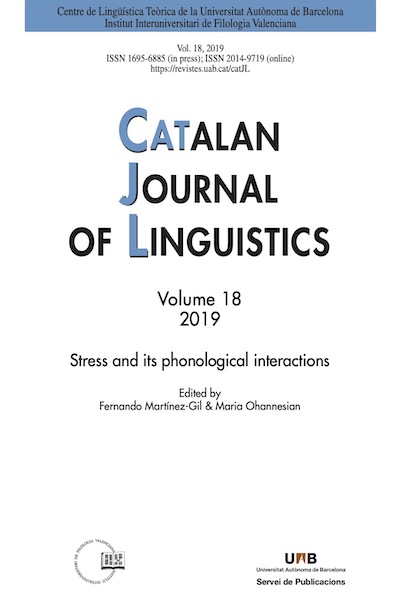
Autors:
Fernando Martínez-Gil & Maria Ohannesian (eds.)
Títol:
Stress and its phonological interactionsEditorial: Bellaterra: Servei de Publicacions de la UAB
Col·lecció: Catalan Journal of Linguistics #18Data de publicació: 2019
Pàgines: 218 Text completThe articles that make up this volume deal with a variety of issues related to primary and secondary stress assignment, including the interaction of stress with sonority, vowel changes in Latin, stress shift in verb+clitic groups, the role of stress in truncation and loanword adaptation, and stress location in prominence augmentation strategies.
Títols de la col·lecció / Also in this series:


